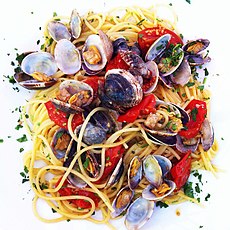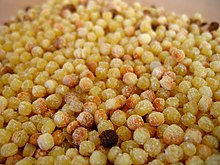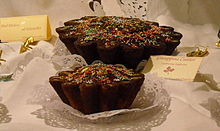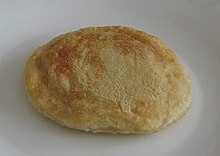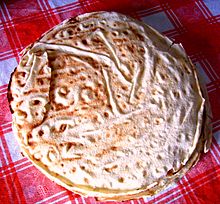| Name |
Image |
Description
|
| malloreddus |
 |
the malloreddus are tapered-shaped durum wheat semolina pasta traditionally flavored with saffron. They are usually seasoned with campidano or sausage sauce, but among the typical recipes there is the variant with casu furriau that is with melted cheese and saffron. They are also known as cigiones in Sassari and Cravaos in Nuoro, and - in Italian - gnocchetti sardi;[2]
|
| the culurgiones |
 |
fresh durum wheat dumplings filled with ricotta and mint, or with a filling based on potato, fresh cheese and mint;
|
| lorighittas |
 |
pasta prepared since ancient times in Morgongiori, a small town in the middle of the island, weaving a double strand of pasta;
|
| macarrones de busa |
 |
a sort of bucatini made with a special elongated iron;
|
| macarrones furriaos |
|
dumplings topped with very fresh pecorino cheese, melted together with the bran to form a sort of cream;
|
| macarrones cravàos, o de punzu or macarrones de ùngia |
 |
in Gallurese called chiusòni or ciusòni, are particular small dumplings of durum wheat semolina in the form of small cylinders of 3–4 cm in size, spread all over the island but in particular in Gallura;[3]
|
| the fregula |
 |
a particular dry pasta made from durum wheat semolina, worked in small lumps and used for typical dishes such as fregula with clams or fregula with sauce. It is also used to make soups with meat broths;[4]
|
| Gallurese soup or suppa cuatta |
|
a dish consisting of Sardinian bread, casizolu, spices and pecorino cheese, all softened with broth and cooked in the oven;
|
| typical of the Sassarese is the fabadda (favata) |
|
traditionally prepared during the carnival period, which consists of a soup made with dried beans, cabbage, fennel, pork rind and pork;
|
| panada |
|
an empanada made with puff pastry and stuffed with lamb (or eels), potatoes, and dried tomatoes; it is prepared in all the island, being nowadays a specialty of various towns such as Assemini, Oschiri, Berchidda, Pattada, and Cuglieri;
|
| pane frattau or pane carasau |
 |
toasted bread soaked in the broth, arranged in layers interspersed with grated pecorino and tomato sauce and with a poached egg on top;
|
| the soup and 'merca |
|
made with su succu, a particular type of pasta similar to tagliolini, with tomatoes, zucchini, potatoes (depending on the variants), with the final addition of curdled sheep's milk (frue);
|
| filindeu |
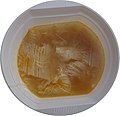 |
a pasta that is made only in Nuoro, made with the finest semolina, woven in a particular way and served with sheep's broth and plenty of fresh cheese;
|
| su succu |
|
first dish typical of Busachi, prepared with very thin tagliolini, or angel hair, cooked in sheep's broth, flavored with saffron in stigmas[clarification needed], and seasoned with fresh, acidulous pecorino.
|
